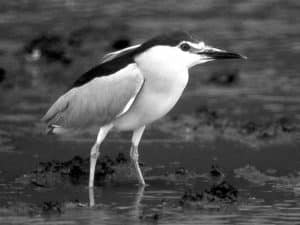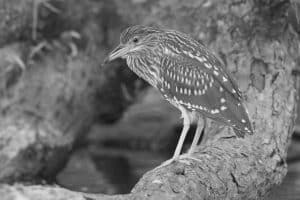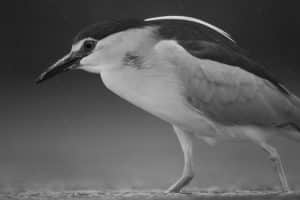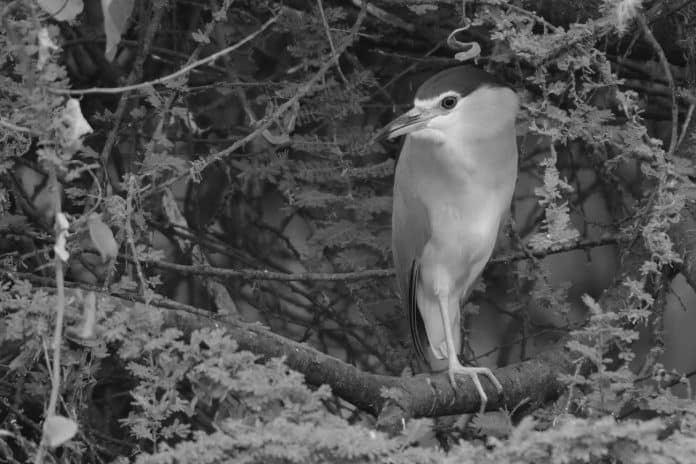Introduction to the Black-Crowned Night-Heron
Welcome to the fascinating world of the Black-Crowned Night-Heron, a captivating and enigmatic bird species that graces the landscapes of Tanzania. As its name suggests, this striking avian creature is characterized by its black crown and nocturnal habits, making it a truly mesmerizing subject for birdwatchers and wildlife enthusiasts. The Black-Crowned Night-Heron in Tanzania, scientifically known as Nycticorax nycticorax, is a species of heron that belongs to the family Ardeidae. Found in various wetland habitats across Tanzania, this bird’s unique behaviors and striking appearance have made it a sought-after sighting for nature lovers and photographers alike.
Habitat and Distribution of the Black-Crowned Night-Heron in Tanzania

The Black-Crowned Night-Heron is widely distributed across the diverse ecosystems of Tanzania, making its home in a range of wetland habitats including marshes, swamps, rivers, and lakes. This adaptable species can be found in both urban and rural settings, often inhabiting parks, botanical gardens, and other green spaces within city limits. Its distribution spans from the coastal regions to the inland water bodies, making it a versatile and resilient bird in the Tanzanian landscape. The ability of the Black-Crowned Night-Heron to thrive in various wetland environments underscores its importance as a flagship species for the conservation of these vital ecosystems.
Behavior and Characteristics of the Black-Crowned Night-Heron
The Black-Crowned Night-Heron is renowned for its distinct nocturnal behavior, often showcasing its remarkable hunting prowess under the cover of darkness. With its keen eyesight and stealthy demeanor, this heron emerges at dusk to forage for its prey, which primarily consists of fish, amphibians, insects, and small mammals. Its cryptic plumage and subdued movements make it a master of camouflage, allowing it to blend seamlessly into its surroundings while stalking its unsuspecting quarry. Apart from its nocturnal activities, the Black-Crowned Night-Heron is also recognized for its unique vocalizations, which include a series of hoarse quacks and guttural croaks, adding to the mystique surrounding this captivating species.
Conservation Status and Threats
Despite its widespread distribution, the Black-Crowned Night-Heron faces various conservation challenges in Tanzania, stemming from habitat loss, pollution, and human disturbance. The degradation of wetland habitats due to urbanization and agricultural expansion poses a significant threat to the long-term survival of this species, as it relies heavily on these ecosystems for nesting, roosting, and foraging. Furthermore, the indiscriminate use of pesticides and pollutants in water bodies can have adverse effects on the heron’s food sources, leading to potential health risks and population declines. By understanding the conservation status and threats facing the Black-Crowned Night-Heron, we can work towards implementing effective measures to safeguard its future and the integrity of its habitats.
Observing the Black-Crowned Night-Heron in Tanzania
Observing the Black-Crowned Night-Heron in its natural habitat is a deeply rewarding experience, offering a glimpse into the captivating world of this nocturnal marvel. To increase your chances of spotting this elusive bird, consider visiting wetland areas during the early morning or late evening, when the heron is most active. Patience and attentiveness are key when seeking out this species, as its stealthy nature and nocturnal habits require a keen eye and a quiet presence. By immersing yourself in the wetland environments of Tanzania, you can witness the beauty and grace of the Black-Crowned Night-Heron as it goes about its nightly activities, providing a truly memorable encounter with nature.
Best Locations for Spotting the Black-Crowned Night-Heron in Tanzania

Tanzania boasts a wealth of prime locations for observing the Black-Crowned Night-Heron in its natural habitat, each offering unique opportunities to witness this captivating species. Wetland reserves such as the Lake Manyara National Park, the Ngorongoro Conservation Area, and the Selous Game Reserve are renowned for their diverse birdlife, providing ideal settings for encountering the Black-Crowned Night-Heron amidst the tranquil surroundings of marshes, rivers, and lakes. Additionally, coastal areas and inland water bodies offer promising opportunities for observing this species, making Tanzania a haven for birdwatchers seeking to witness the nocturnal marvels of the Black-Crowned Night-Heron.
Recommended Gear and Equipment for Birdwatching
When embarking on a birdwatching expedition to observe the Black-Crowned Night-Heron in Tanzania, it is essential to equip yourself with the appropriate gear and equipment to enhance your experience. A pair of high-quality binoculars with excellent low-light performance is indispensable for spotting and observing the heron in its natural habitat, allowing you to appreciate its intricate plumage and behavior up close. Additionally, a field guide specific to the birds of Tanzania can assist in identifying the diverse avian species that inhabit the wetland environments, including the Black-Crowned Night-Heron. Carrying a notebook and pen to record your observations and insights can further enrich your birdwatching experience, creating a lasting record of your encounters with this remarkable species.
Photography Tips for Capturing the Black-Crowned Night-Heron
For photography enthusiasts seeking to capture the beauty of the Black-Crowned Night-Heron in Tanzania, there are several tips and techniques to consider when embarking on a wildlife photography expedition. Given the heron’s nocturnal nature, investing in a high-quality camera with excellent low-light capabilities is essential for capturing stunning images of this elusive species in its natural environment. Patience and persistence are key when photographing the Black-Crowned Night-Heron, as it may require waiting for the ideal moment to capture its captivating behaviors and interactions. Additionally, utilizing a telephoto lens can allow for close-up shots without disturbing the heron, preserving its natural behaviors and minimizing human impact.
Ethical Considerations for Birdwatching and Wildlife Photography

As nature enthusiasts and photographers, it is crucial to approach birdwatching and wildlife photography with a strong emphasis on ethical practices and responsible behavior. When observing the Black-Crowned Night-Heron in Tanzania, prioritize the well-being of the bird and its habitat by maintaining a respectful distance and minimizing disturbances. Avoid using playback recordings of bird calls to attract the heron, as this can disrupt its natural behaviors and cause undue stress. Furthermore, adhere to designated trails and viewing areas to minimize environmental impact and preserve the integrity of the wetland habitats. By adopting ethical principles and mindfulness in your birdwatching and photography pursuits, you contribute to the conservation of the Black-Crowned Night-Heron and its natural environment.
Conclusion
In conclusion, the Black-Crowned Night-Heron in Tanzania stands as a testament to the awe-inspiring diversity of avian life within the country’s wetland ecosystems. Its nocturnal habits, striking appearance, and vital ecological role underscore the significance of conserving its habitats and ensuring its long-term survival. By exploring the best locations for observing the heron, equipping yourself with the recommended gear, and embracing ethical practices in birdwatching and wildlife photography, you can experience the wonder of the Black-Crowned Night-Heron while contributing to its conservation. Let your encounters with this nocturnal marvel inspire a deeper appreciation for the natural world and the need to protect its inhabitants for generations to come.


































